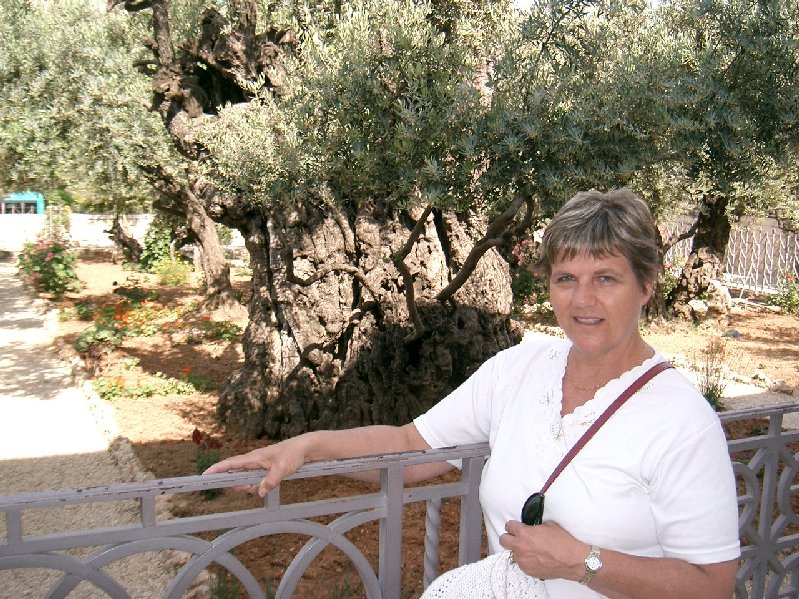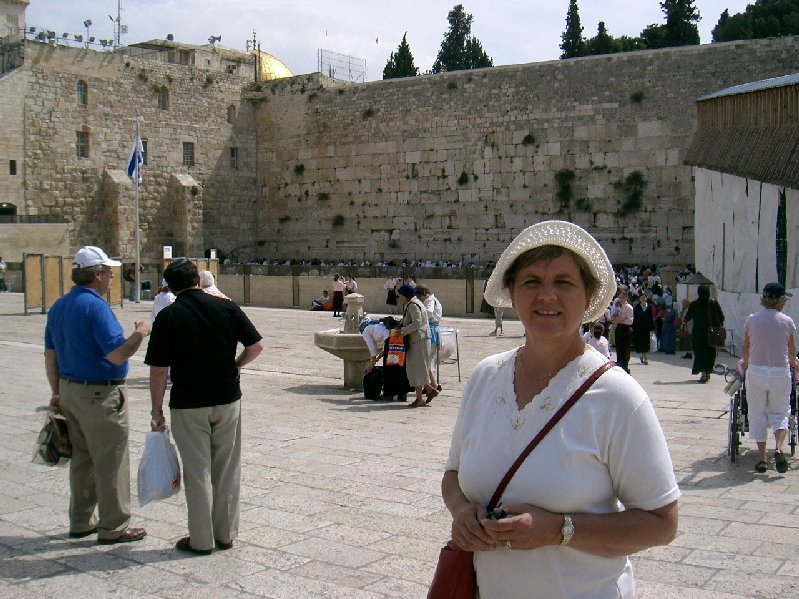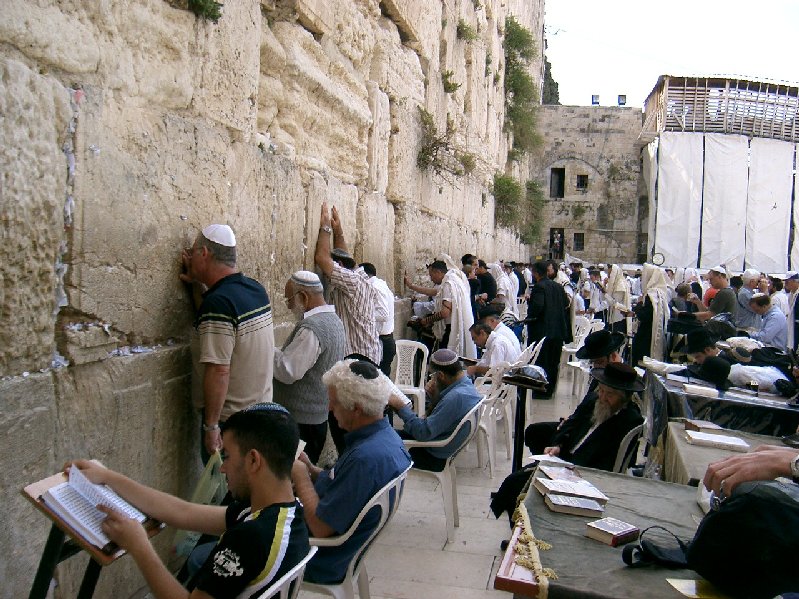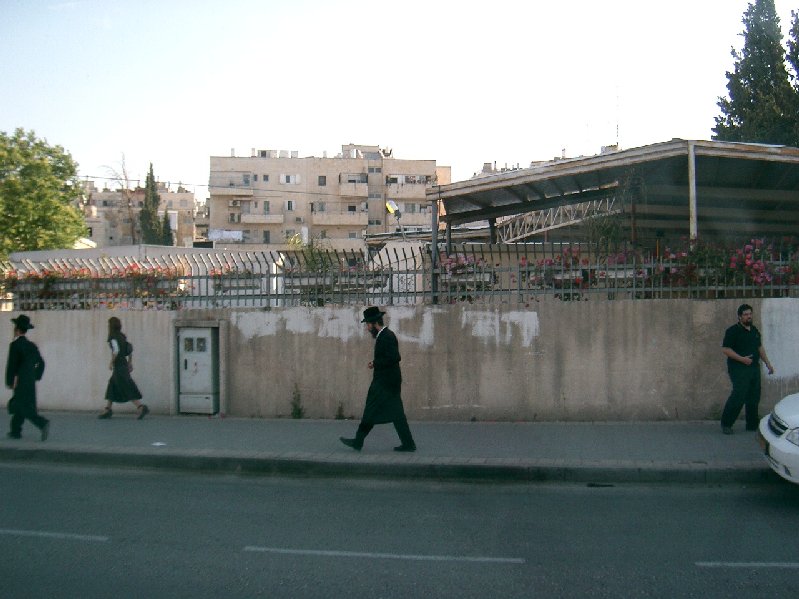Israel 2007
In May 2007 we visited Israel, as part of as tour of the Middle East. What a privilege to visit the Holy Land. It made reading of the Bible come alive!
Monday 14th May London to Tel Aviv
We flew from London
to Tel Aviv, business class on British Airways (free on airpoints!). We
were able to use the lounge at Heathrow so could catch up on our
website, and then we had the wonderful 'lie down' seats and fabulous
service all the way to Israel.
There were few formalities on entering Israel and we were transferred at high speed to our (massive) hotel in Jerusalem,
the Jerusalem Gate Hotel. It was wonderful to be here after learning
about this city all our lives! In the evening we went for a walk
through the traffic and noise. There were armed police on every corner
so we felt safe, but the city sure is alive!
Tuesday 15th May Jerusalem
A full and wonderful day, but Ross was sick so was very worn out at the end.
First we went to the Israel Museum for a look at the model of Jerusalem
as it was at the time of Christ. This gave us a great overview of
where everything is so we could orientate ourselves for later on. Next
we saw the Dead Sea Scrolls in the Shrine of the Book, and learned
about the Essene Sect that lived in Qumran a couple of hundred year's before Christ.
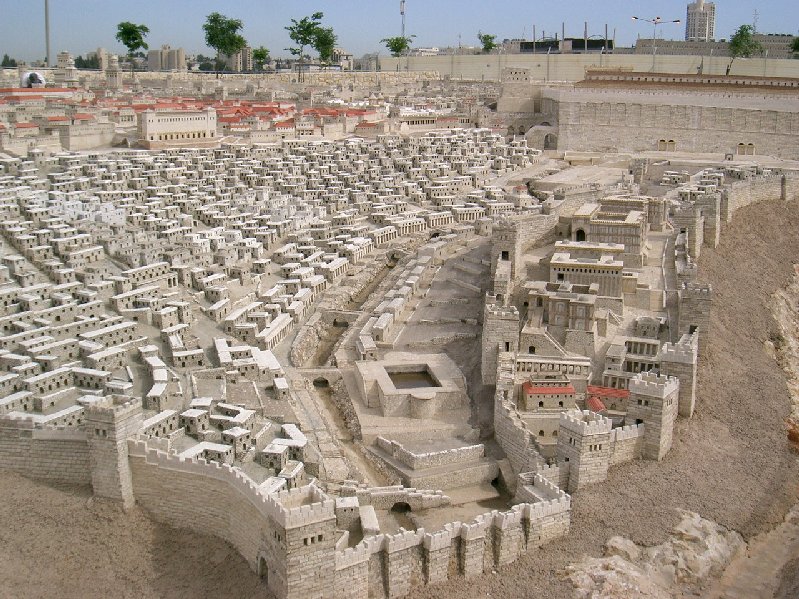

Next we went to the Hadasseh Medical Centre's synagogue to see the
stained glass windows created by Marc Chagall. They depict each of the
tribes of Israel.

Then it was on to the Holocaust Museum.
What a sobering reminder of the atrocities committed against the Jews
in the Second World War. There are photos, artifacts, videos, stories
etc. telling the story of the persecution, rounding up, extermination,
resistance and ultimate recovery of the Jews. You couldn't help but be
significantly affected by this memorial, Yad Vashem.
We then saw Ein Karem, the birthplace of John the Baptist before driving into Palestine to visit Bethlehem.
(Our tour was organised by
Consolidated Tour Operators. Our guide Avi is a Jew so had to be
replaced by another guide - a Christian, for the Bethlehem visit as Avi was not allowed into the country).
We went through the checkpoint and walls (AK 47s everywhere!) and found Palestine to be quite dilapidated and messy. All of the shops have shutters and bars and there is lots of chaos on the streets.
In Bethlehem
we saw the Church of the Nativity which is actually 3 churches: Greek
Orthodox, Armenian and Roman Catholic. They are built over the site
where the birth of Jesus took place. We saw the place where the manger
was put and also the tombs of children killed by Herod when he wanted
to get rid of the baby Jesus.
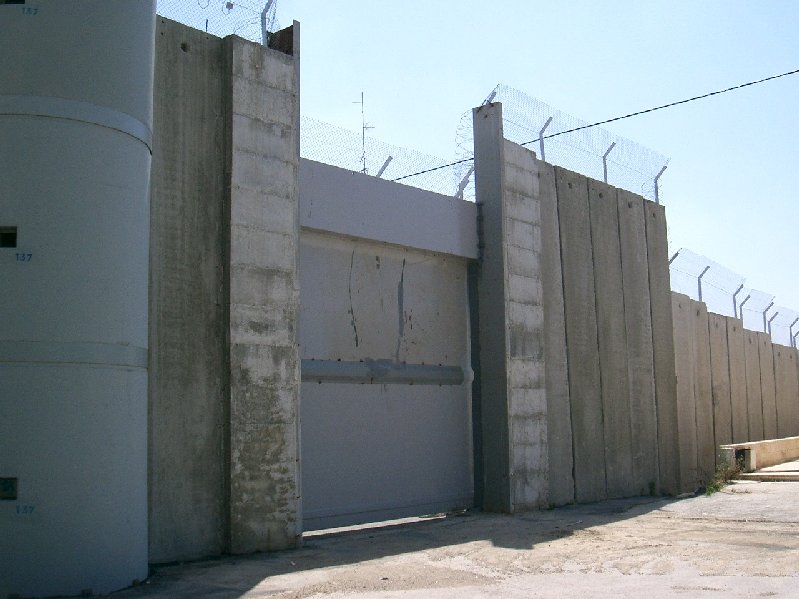
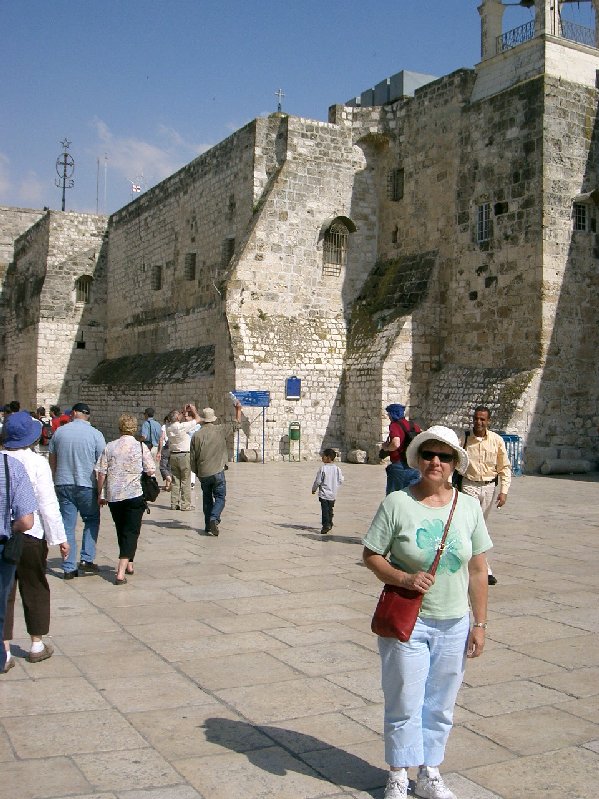

We were exhausted when we got back to our hotel but perked up a bit after a rest, and then went on an 'optional'to see Jerusalem by night. The walls of the Old City are illuminated at night making for a spectacular sight.
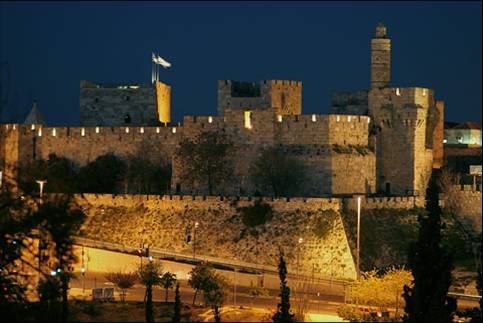
First we saw the Damascas Gate (used if you are coming/going to Damascus)
with its public meeting area and markets. Many Bible events took place
here, outside the gates of the city as it is a major meeting area. We
then followed the walls of the Old City and saw the Mount of Olives, the Garden of Gethsemane
and the Brook Kidron. The Mt of Olives is covered by graves. We also
saw the place where Jesus was tempted to throw Himself down from the
temple wall during the temptation.
Next we entered the Old City
through the Dung Gate (used for removing the dung of the temple
sacrifices in Bible days) and saw where Jesus upended the tables of the
moneychangers.
We then went downtown for a falafel meal. The place was buzzing, even at 10 pm.
At the end of the day we looked back on a series of wonderful sights and experiences in Jerusalem, the Holy City.
Wednesday 16th May Jerusalem
Today we explored the Old City and saw most of the key sites in the life of Jesus.
We started on the top of the Mt of Olives to get a panoramic view of the Old City. Wonderful! At the bottom of the Mt of Olives we visited the Garden of Gethsemane
(which still contains olive trees that were there from 2000 year's
ago). We remembered Jesus praying there and how he was betrayed and
sent for trial.
Then
it was into the City and a visit to the Wailing Wall. This is the most
sacred spot in Judaism as it is the only remaining part of the Temple
that was destroyed in AD 70. We saw the Jews praying there, putting
prayer requests into cracks in the wall, reciting the Torah and rocking
and chanting. It was moving to be able to pray there with them
(although the girls and boys were in separate sections).
Next
we visited the Dome of the Rock where Mohammed supposedly rose to
heaven. It was interesting to find a stone at the highest point on Mt
Moriah (on which the Temple
and the Mosque were built). This was probably the place where Abraham
offered Isaac as a sacrifice and later where the Holy of Holies in the Temple was situated.
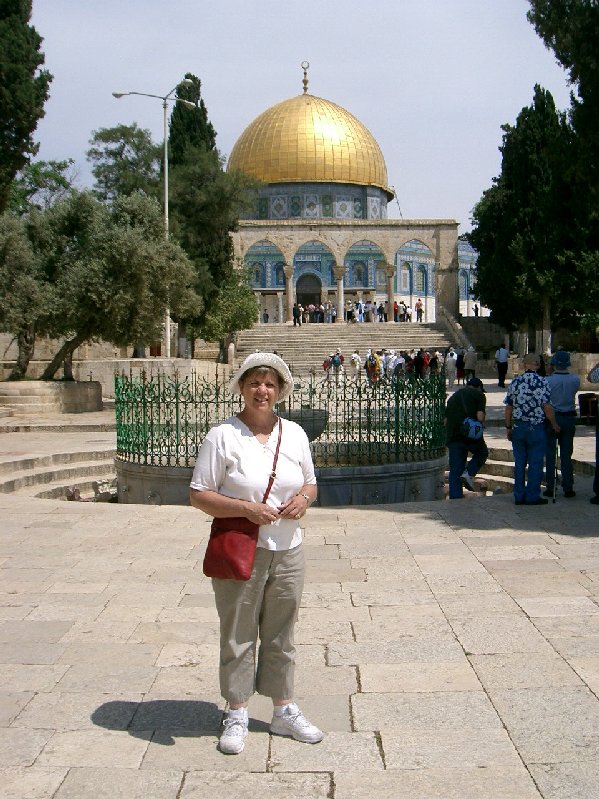
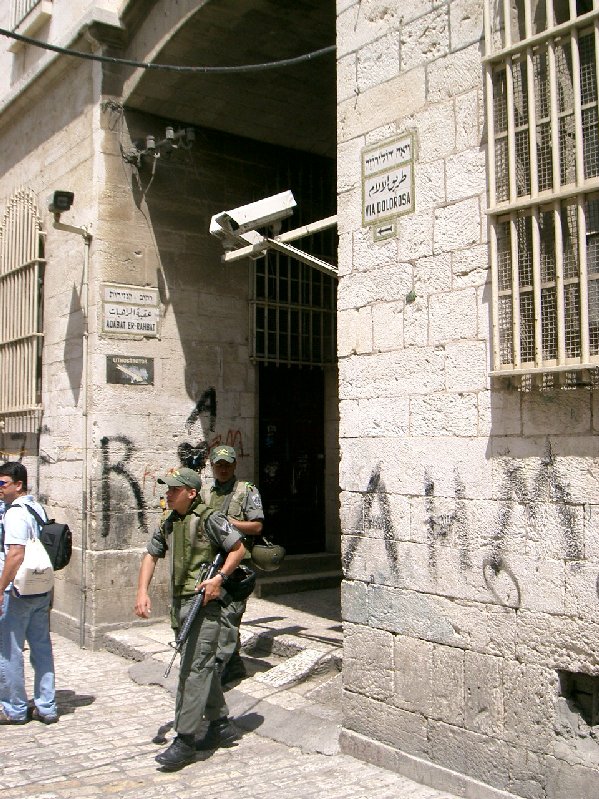
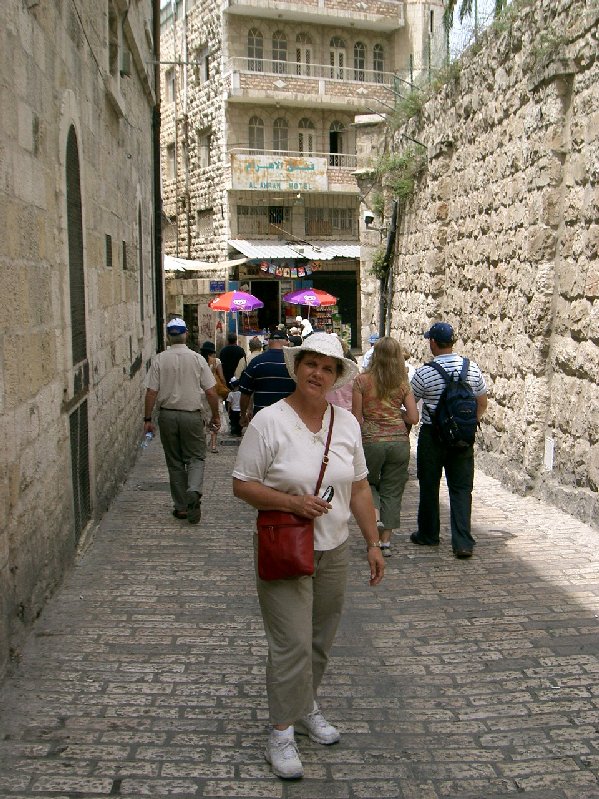
We
then walked the Via Dolorosa, the Way of the Cross, that depicts the
stages in Jesus' walk from His trial to His crucifixion on Golgotha.
Again, it was very moving to walk the narrow streets through the crowds
and remember what Jesus went through. The final stations are in the
Church of the Holy Sepulchre, which includes the place where Jesus was
crucified and the tomb (supposedly) where He was laid and rose from the
dead. The Church was built to commemorate what happened, but with the
crowds of people and it being destroyed and rebuilt many times, it
seemed a little unreal.
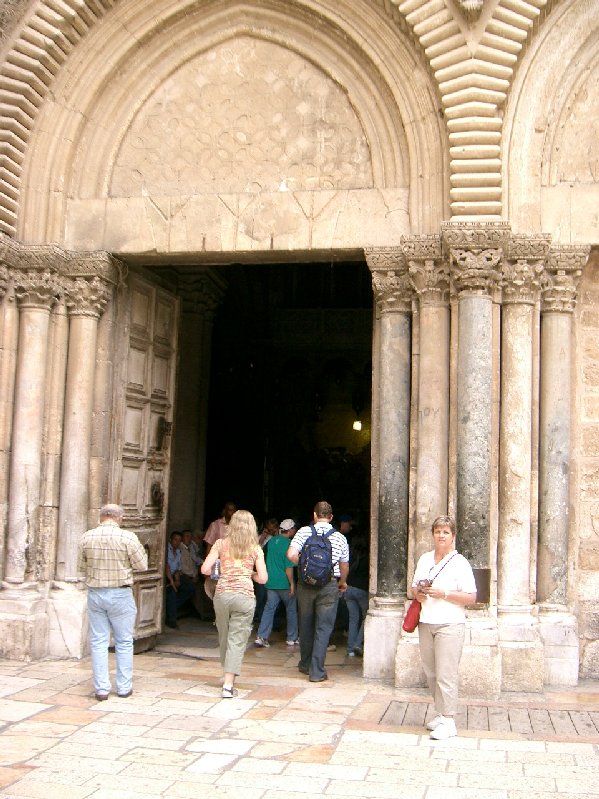
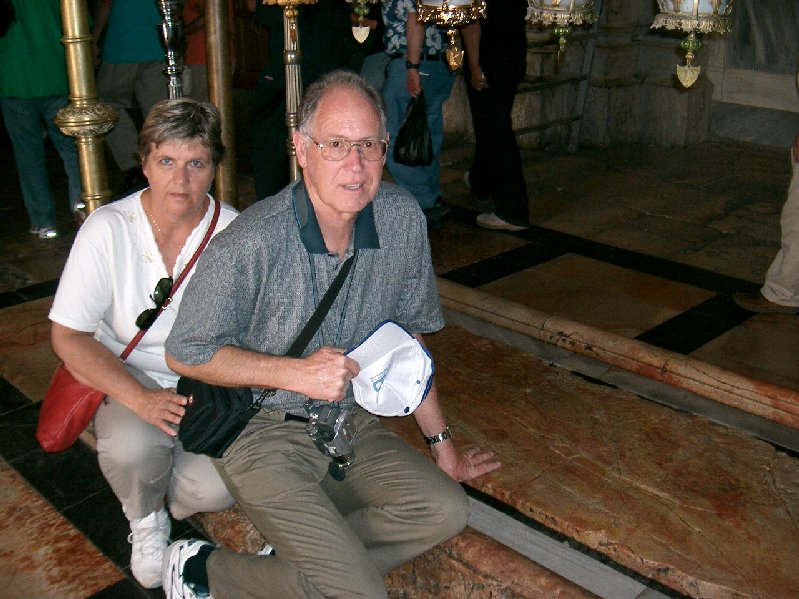
We had then explored the 4 quarters of the Old City:
Jewish, Christian, Armenian and Moslem. It poured with lots of thunder
and lightning at this stage so we had to wait it out in the Jewish
Quarter.
Next we went to Mt Zion, one of the small hills in Jerusalem outside the Old City.
Here we saw the Dormitian Abbey commemorating Mary, the Room of the
Last Supper (a typical 'upper room') and the tomb of King David.


There
are two sites for the death and resurrection of Jesus- the Protestant
one being the Garden Tomb, and the Catholic one being the Church of the
Holy Sepulchre. In the Garden Tomb they explained from the Scriptures
how this was likely to be the actual place for the tomb of Joseph of
Arithamea, and so the real place where Jesus was buried and rose again:
on Golgotha, the place of the skull. This felt much more real than the one in the Church of the Holy Sepulchre.

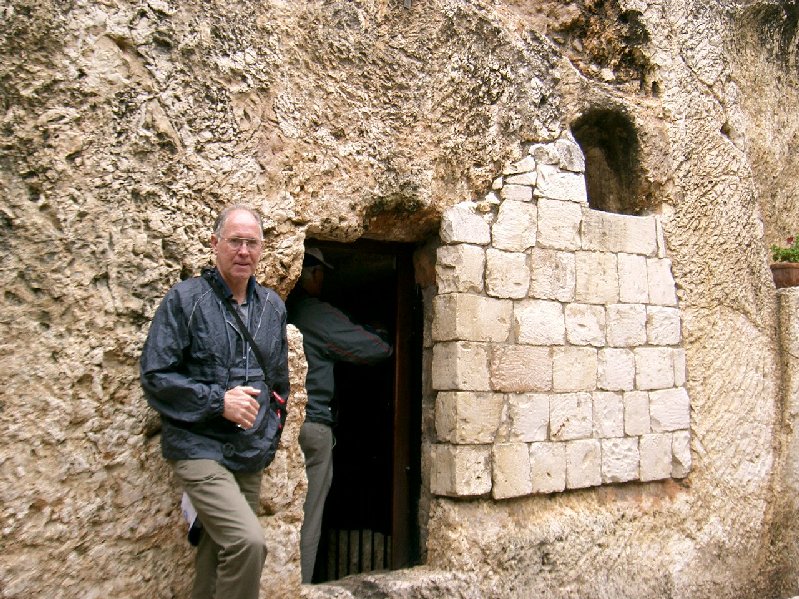


"He is not here, for He is risen".
At all of the 'Holy Sites' there are
now churches with lots of pilgrims visiting. You have to get past this
to remember the actual events, but in many of the places there were
services going on which was lovely.
So we had a couple of wonderful days in Jerusalem. Apart from the Biblical stories we have experienced here are some other observations about the Holy City:
- Jerusalem's buildings must all be made of stone, giving a lovely ambiance.
- There are Hassidic Jews everywhere and they
stand out with their black suits, hats, and devotion to reading the
Torah. The boys are cute with their skull caps and curls, and the girls
are sweet-natured.
- There are police everywhere with AK 47s.
- Millions of trees have been planted and there is a general feeling of prosperity. hope and growth.
- Many rich Jews give lots of money for memorials so there are monuments to them everywhere.
- It is expensive here and you always have a
feeling of being ripped off, especially as it took a while to get used
to the exchange rate: 1USD = 4 shekels
- There is a feeling of being safe in the midst of all of the hatred for Israel, from the surrounding nations.
- It was a real privilege to be there in the Holy City, and to have walked in many of the places that Jesus walked.
Thursday 17th May Jerusalem to Upper Galilee
We headed east towards the Jordan
through the desert and mountains. The area is very dry and we saw
occasional Bedouins leading their sheep and goats along tracks that
have been created over thousands of years in the dry mountains. They
are continually moving to find food and water for the flock.
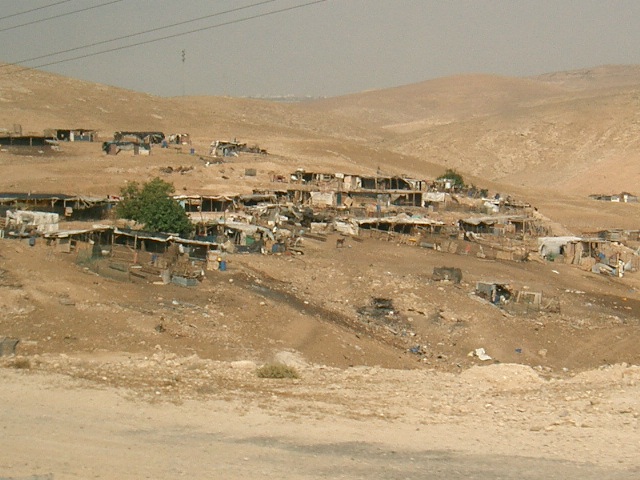
We then came to the West Bank of the Jordan, part of Palestine by agreement with the Israelis, in the Valley of Jezreel. They grow a range of crops, including kiwifruit, watered from the Jordan River.
We crossed back into Israel and the change was very marked. Same environment but how different to Palestine.
Now there were big fields with lots of different crops using the latest
technology and obviously 'a land flowing with milk and honey'.
We stopped at the Tel of Bet She'an- an ancient city of the Decapolis.
It was situated on the Via Maris, the main trade route linking the
south, north and east so was very important for politics and trade. We
wandered through the ruins and saw how life was 2000 years ago. We saw
the theatre, baths, shops, streets, red light district, amphitheatre
where the Christians were thrown to the lions, temples etc. The city
had been built, demolished, rebuilt and was then flattened by the big
earthquake in the 700s. There is still much to do to complete the
restoration but it gave us a great appreciation of a Greek, then Roman
city.
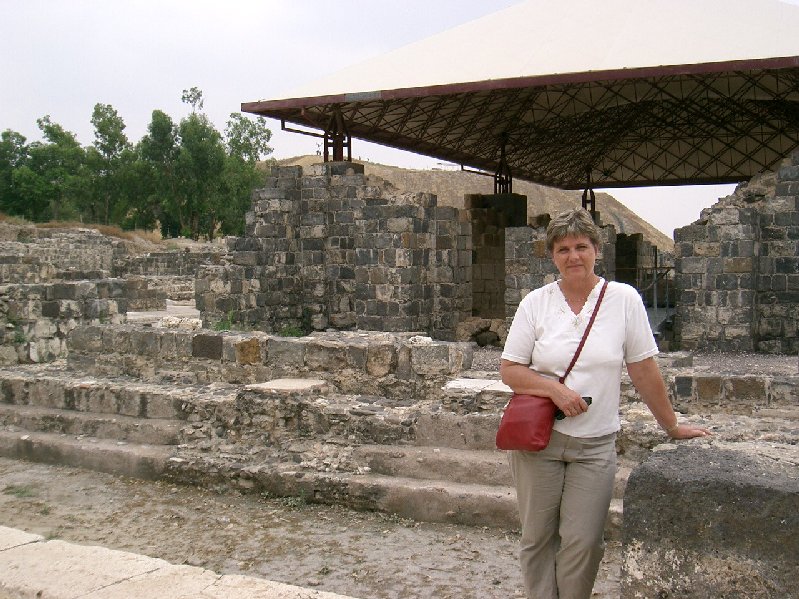
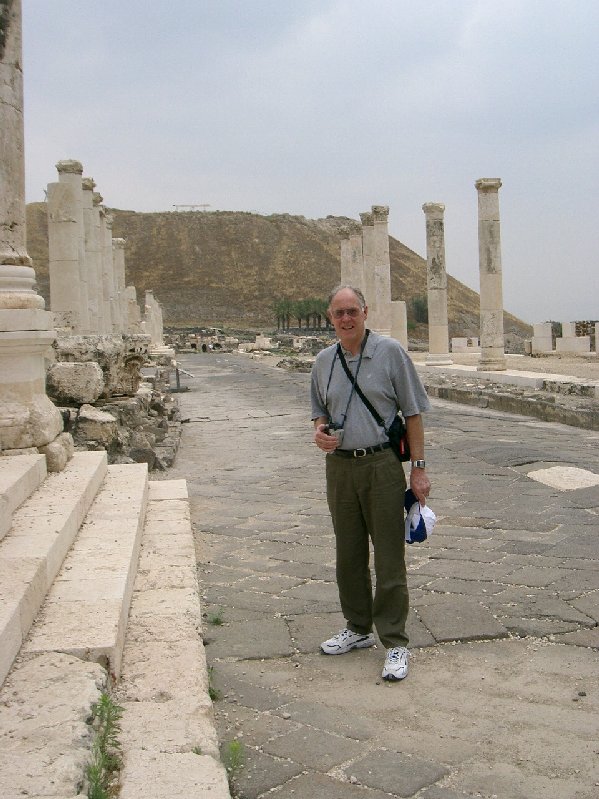
Then it was on to Nazareth, the biggest Arab city in Israel at the beginning of the Galilee.
We saw the place where the Angel Gabriel announced to Joseph that Jesus
was to be born, the supposed place where Joseph worked at his
carpentry, and a shrine to Mary. We also saw the well where Jacob
first met Rachael.

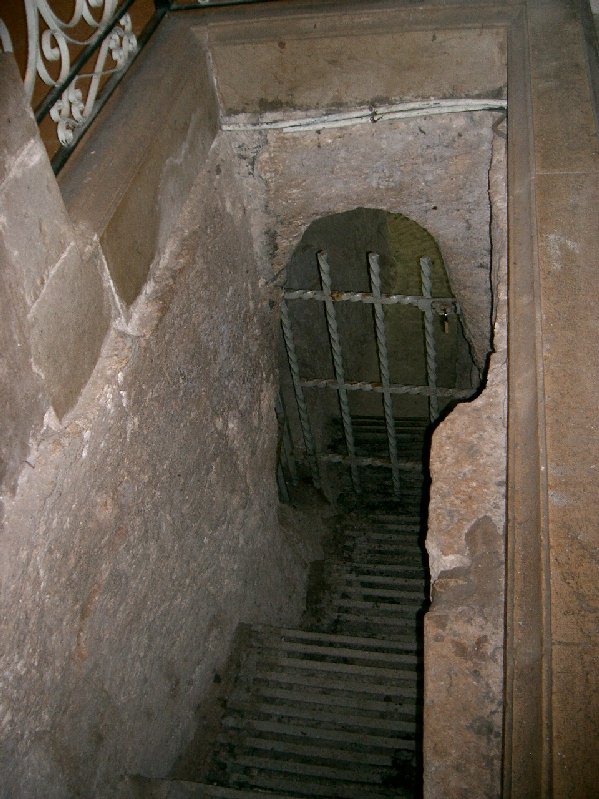
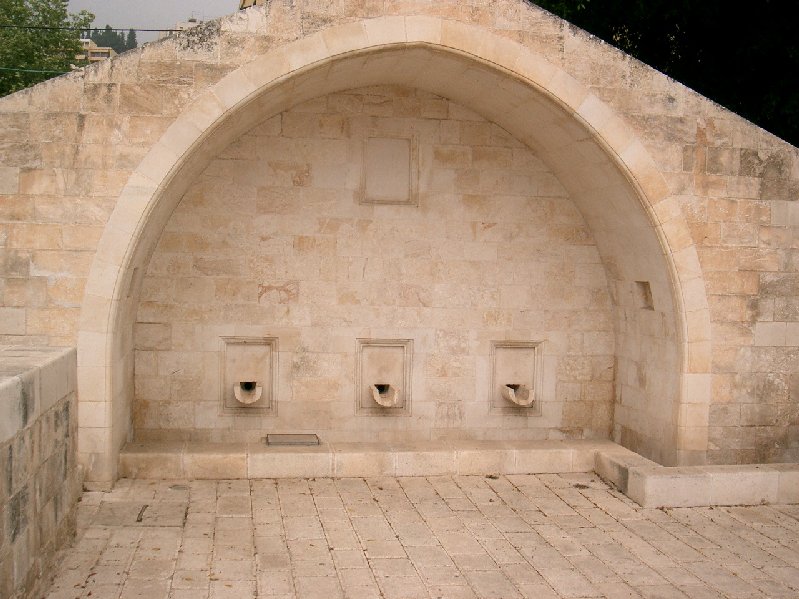
Along the way there were numerous sites where Biblical events took place: Jericho, Moab, Mt of Temptation, Armageddon, Cana etc.
We stopped at Safed and saw some
beautiful paintings and visited the synagogue where a Rabbi Yoseph Caro
wrote the book defining the key elements of the Talmud that Jews must
follow.
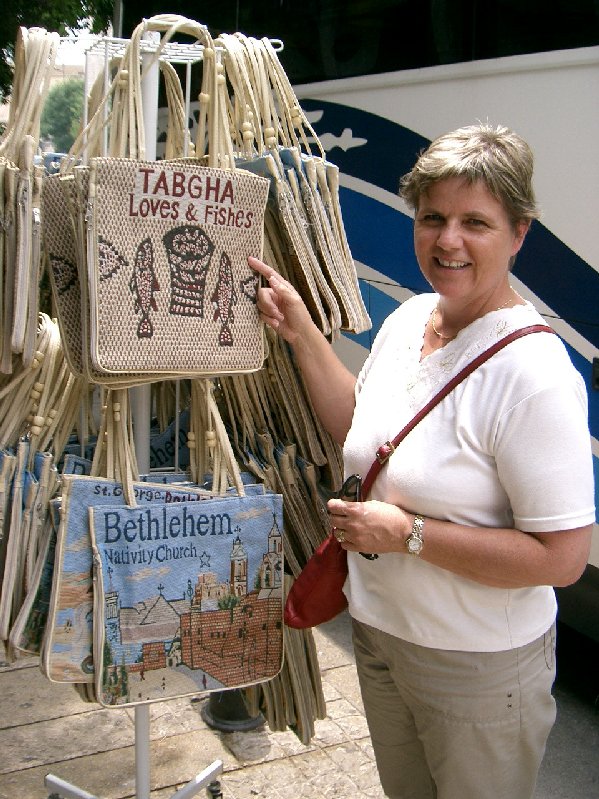
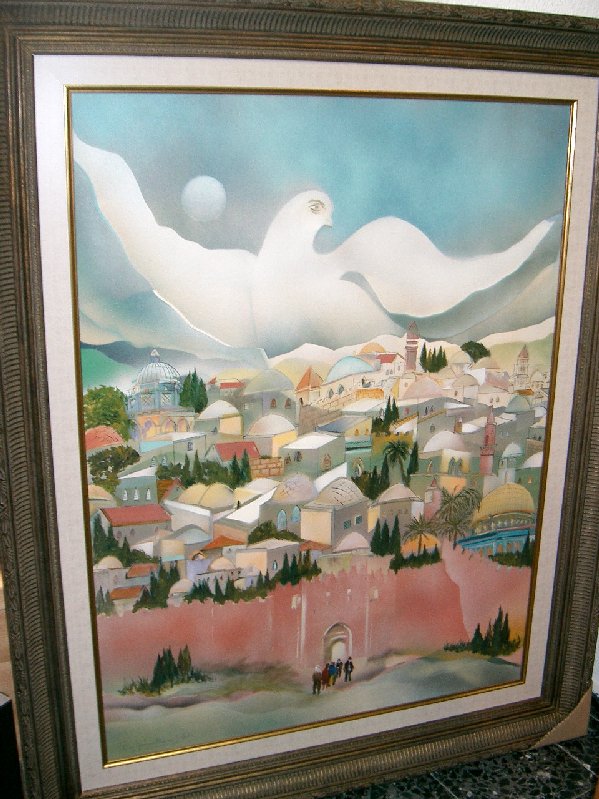

Then it was on to our kibbutz hotel. The kibbutz is in the Hula Valley
which was drained to open up extensive farm land from the swamp. We saw
an old movie that explained the community concept of the kibbutz where
everyone does everything, no-one needs anything and everyone's needs
are met. The hotel was very close to the Syrian border and had just been missed by a missile recently. It had many bunkers where we could get underground if there was an attack! The kibbutz was obviously prospering, though, with many different industries, and plenty of workers and volunteers.


Friday 18th May The Galilee
Another fascinating day. We drove south to the Sea of Galilee and visited the mount of Beatitudes where Jesus preached the Sermon on the Mount, overlooking the lake. Then it was on to a memorial where He fed the 5000 from the loaves and fishes. You could certainly see how the crowds could be accommodated there as it is a natural amphitheatre.
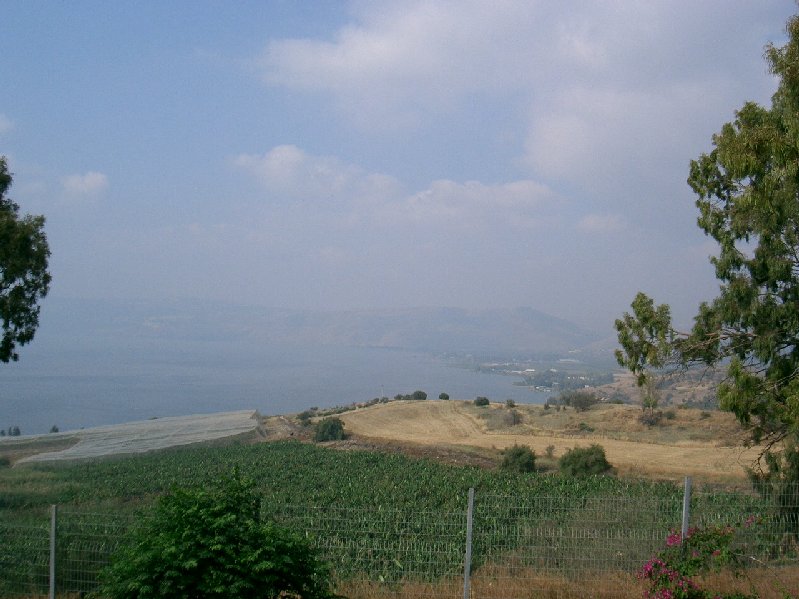

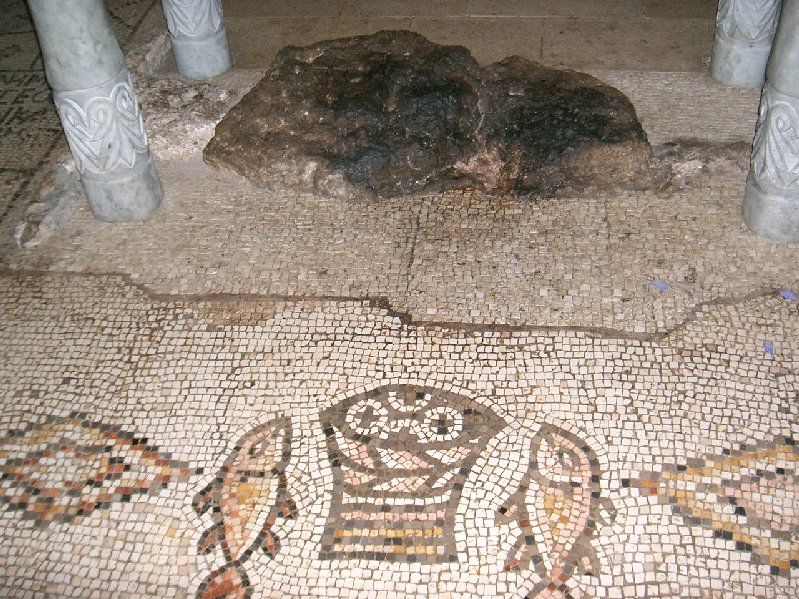
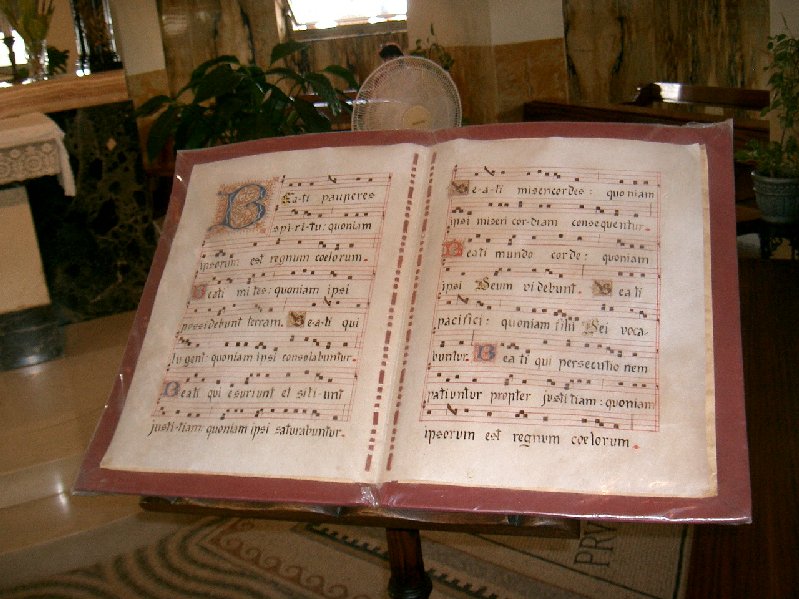
We then moved on to Tiberias, the capital of Galilee. This is where the Talmud and Mishnah were written in the 1st century to explain the Torah. We went on a cruise on the Sea of Galilee where Jesus calmed the waters and got Peter to walk on the water. We were joined by hundreds of children from a Christian school in Nazareth
so there was lots of singing and dancing. After this we visited the
tomb of Maimonides, the second most important prophet in Judaism, after
Moses. He is also called Bambam and wrote a series of 14 books identifying what Judaism is all about.

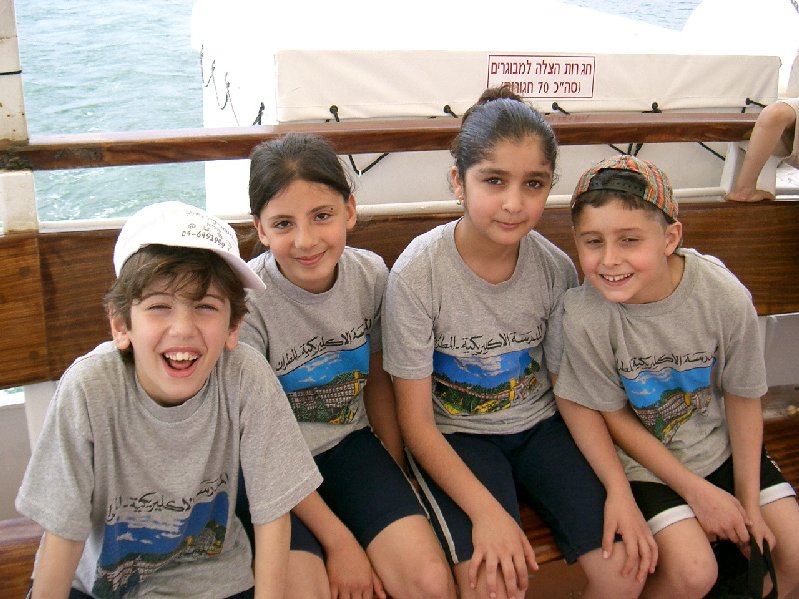
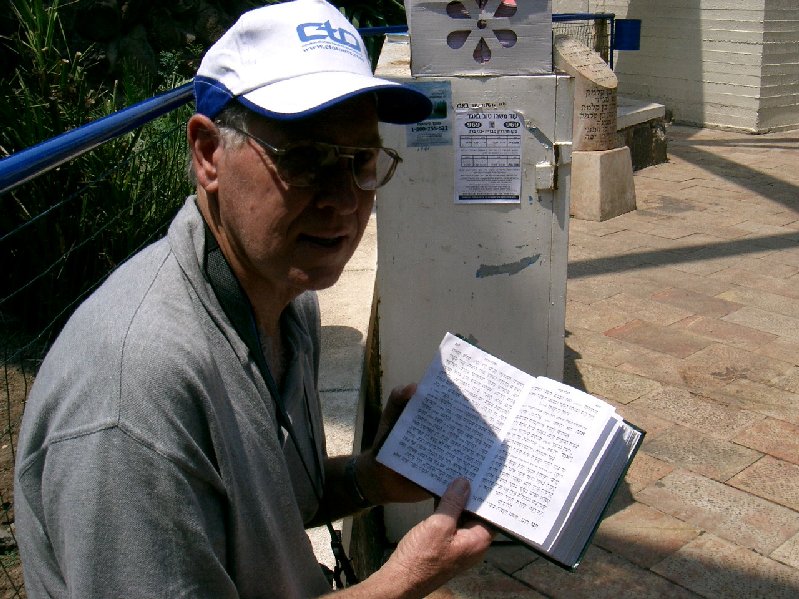
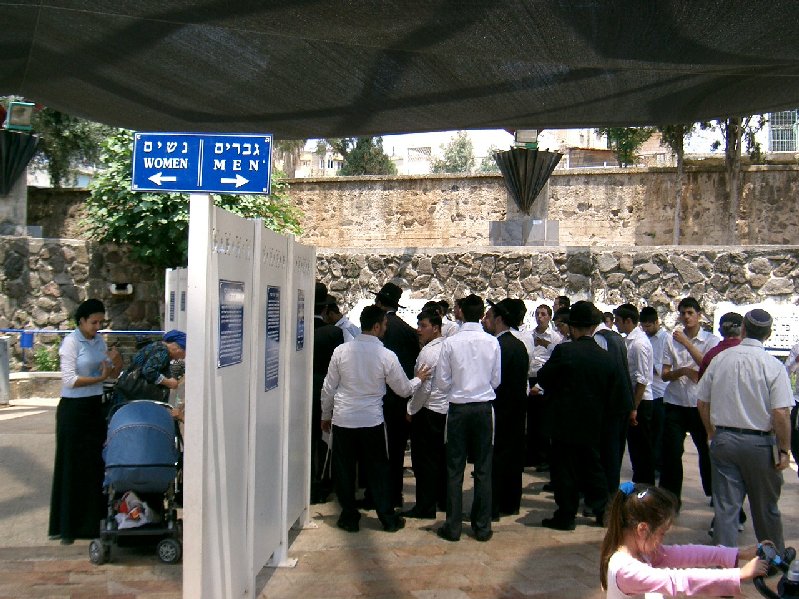
We then had a ‘St Peter’s fish’ lunch eating the kind of fish Peter caught in the Sea of Galilee. Next we visited the Jordan River at the place where Jesus was baptised, and had a paddle in the river. Lots of people were being baptised - a great place to do it!
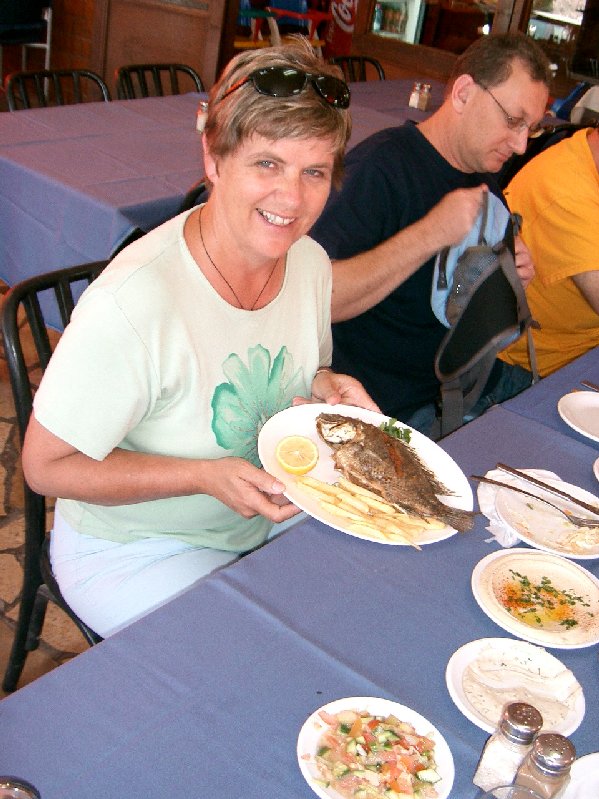


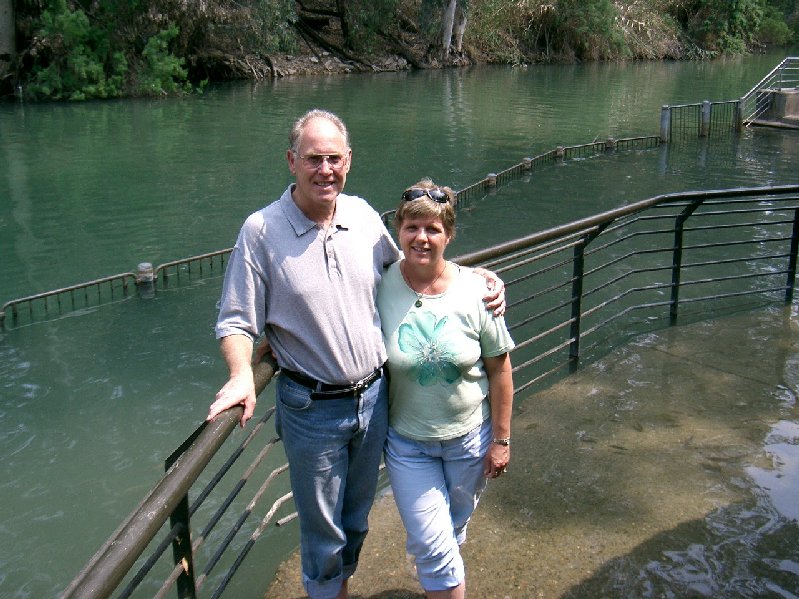
Next stop was Capernaum, the place where Jesus lived during the time of His ministry. We saw the ruins from 2000 year’s ago and could easily see how the people lived. We
saw how olive oil was produced, and grain turned into flour; also a
stone from the menorah at the entrance to the synagogue that Mary,
Joseph and Jesus may well have kissed as they entered. We also saw Peter’s house, beside the lake.
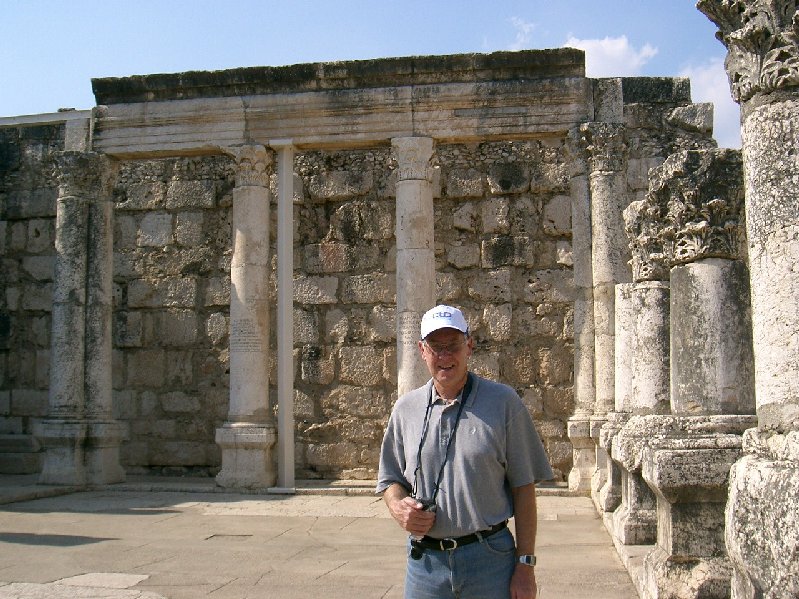

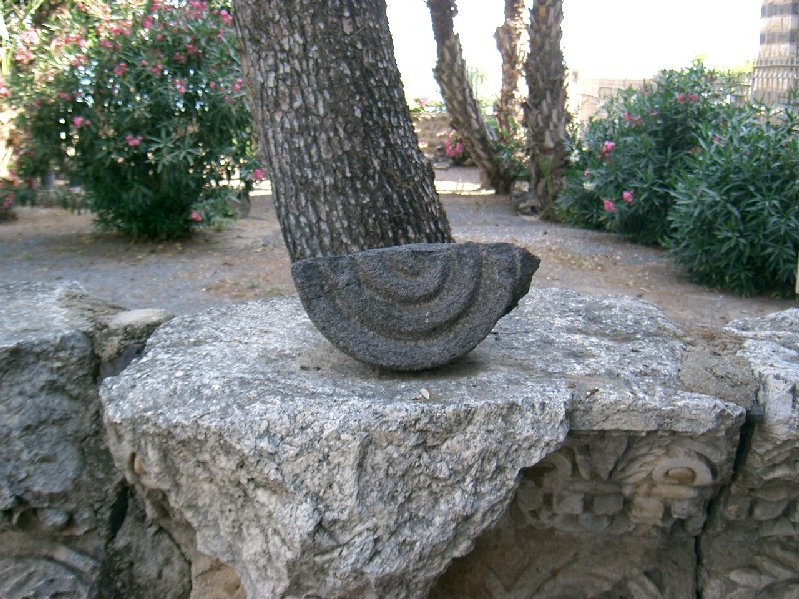
We then returned to the kibbutz via the Golan Heights. We saw minefields, army camps, and evidence of war everywhere, and the exclusion zone between Syria and Israel that has lasted with peace since 1973.
We also saw Druze villages (the Druze revere Jethro, Moses’
father-in-law); an ancient crusader castle, and the ruins of Caesarea
Philippi (Banias).
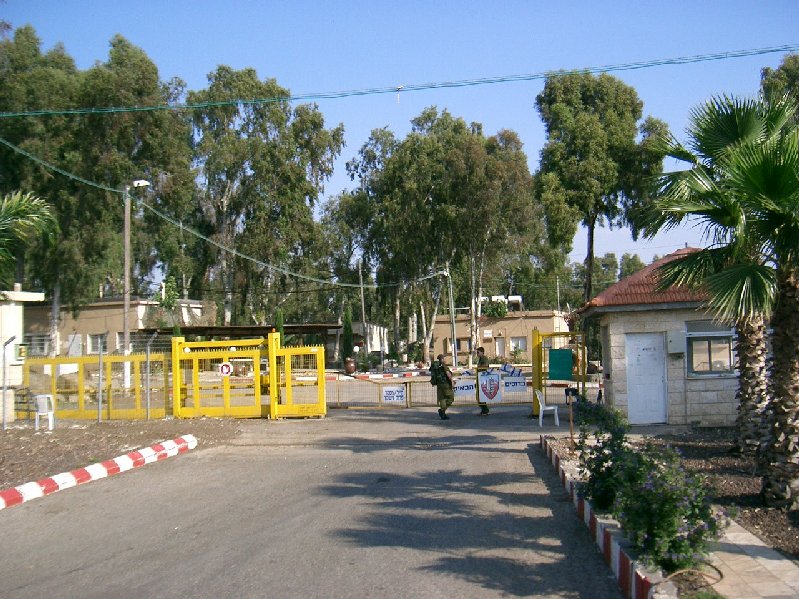
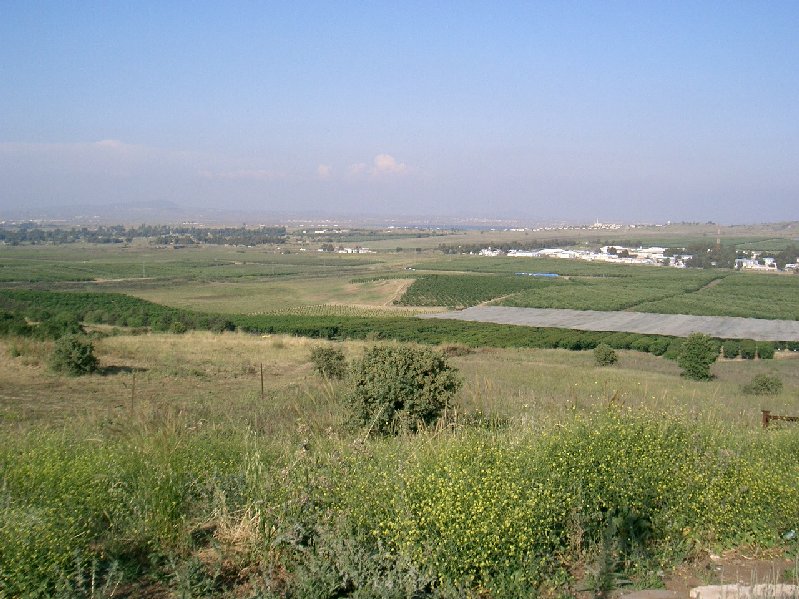
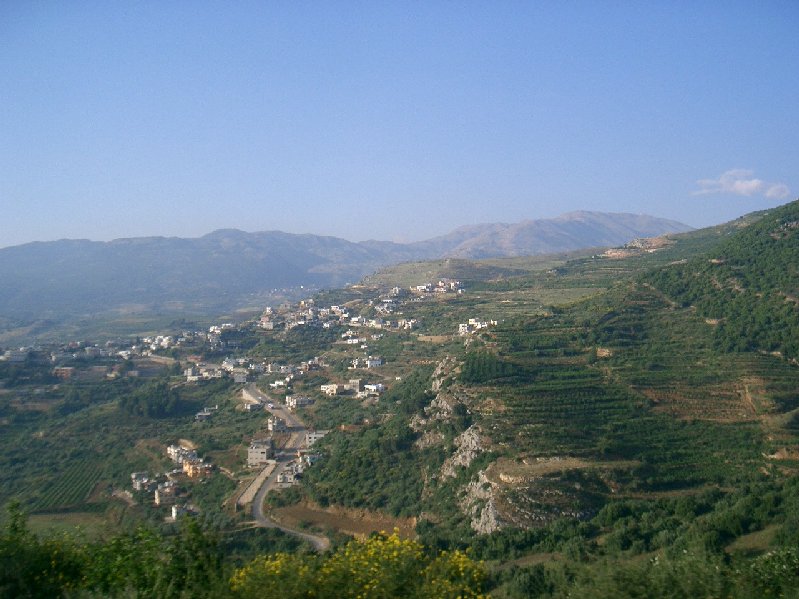
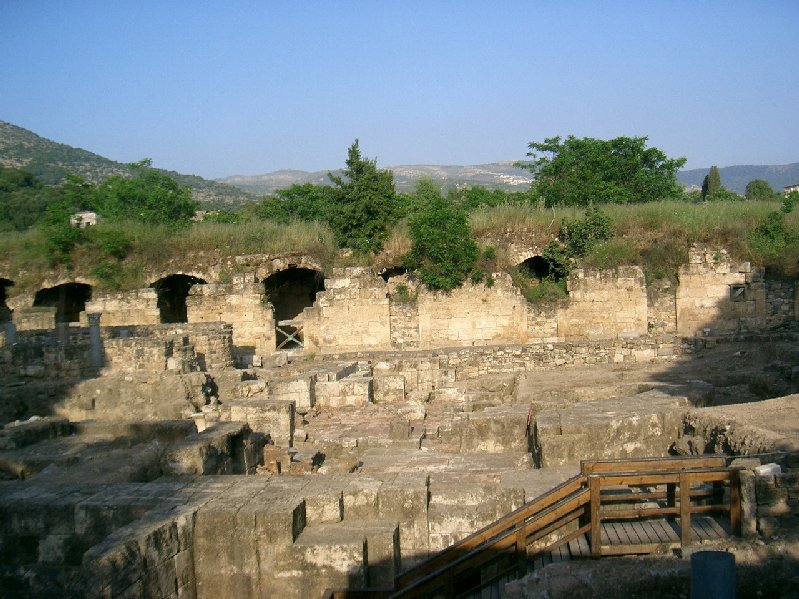
We arrived back at the kibbutz just as Shabbat was starting so were
unable to get anything for dinner! (The Sabbath starts at sundown on
Friday night).
Saturday 19th May Galilee to Tel Aviv
We headed south and then west across to the Mediterranean, to visit the ancient town of Acco or Acre. (On the way we saw the Tel of Makor, described in James Michener’s book, ‘The Source’).
The ruins in Acco are built up one layer on top of the other: recent over a Crusader fortress, over a Roman fortress. The ruins are very well preserved and include a tunnel which was their escape route, when needed. We saw the place where John the Baptist’s head was buried, and then had a wander around the port. The fortifications in Acco are very strong. Even Napoleon couldn’t break them down!
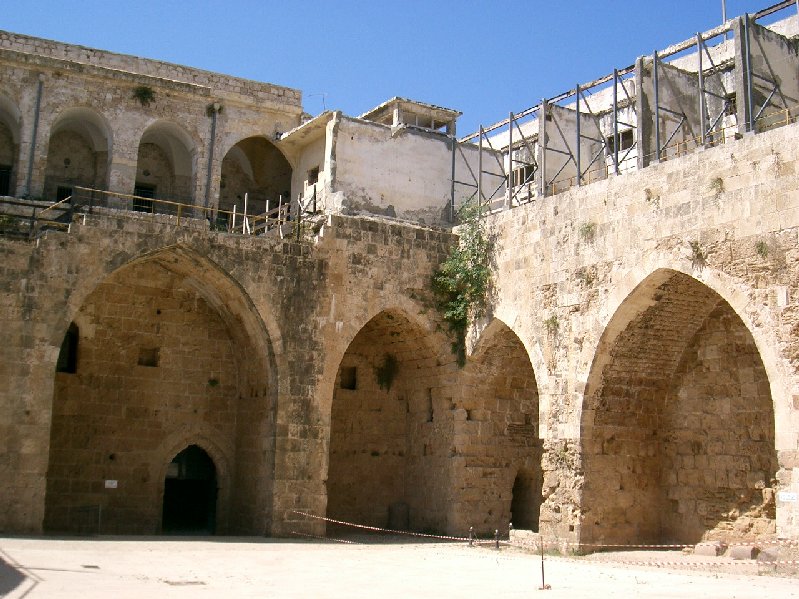

Next stop was the big city of Haifa. We
drove up Mt Carmel (where Elijah challenged the prophets of Baal) and
saw the beautiful Baha’i temple’s gardens which form part of a panorama
overlooking the city.


After a falafel lunch we headed south to Caesarea to see its Roman theatre and fortress. Herod built this amazing place to spend money and slow the rampant inflation at the time! He also built a big canal/aqueduct system to bring water from Mt Carmel ½ an hour’s drive to the north. Caesarea became Israel’s pleasure capital and it was strange to see people enjoying the beaches in the midst of the ancient ruins. The first non-Jewish Christians were baptised in Caesarea.
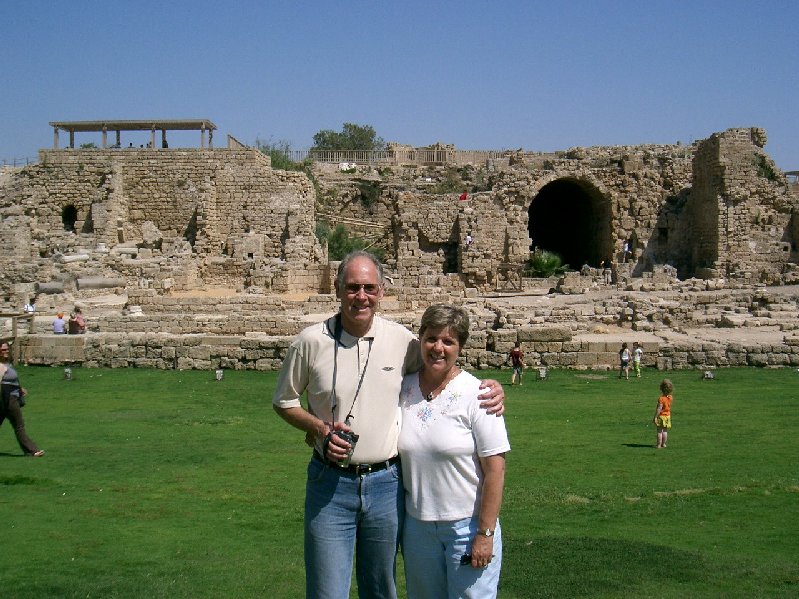
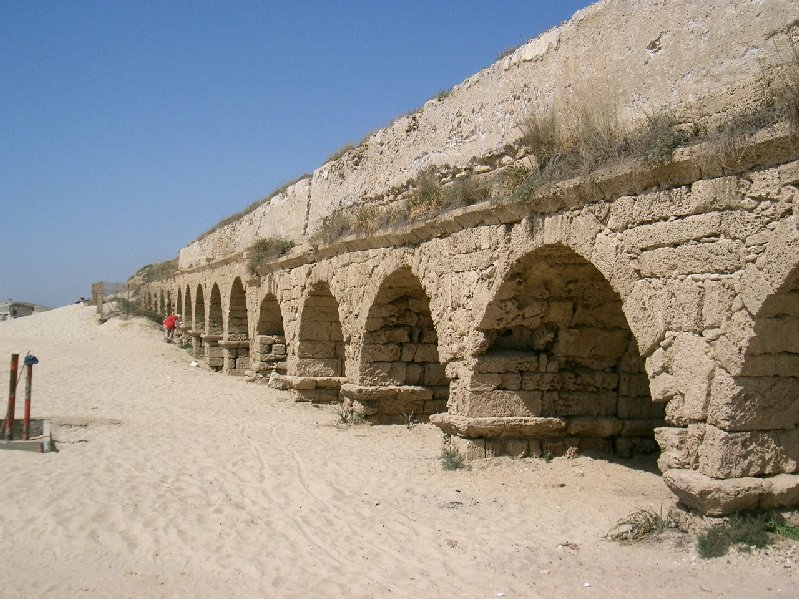
Then it was south to Tel Aviv (meaning the old and the new). It is a sprawling, modern, young people’s city, and all the beaches were full and in party mode.
We went for a short drive to Jaffa, where Jonah left from for Nineveh, and where Peter received his revelation that the gospel was for everyone, not just the Jews. Jaffa has a small natural harbour that has been important for Jews returning to their homeland.
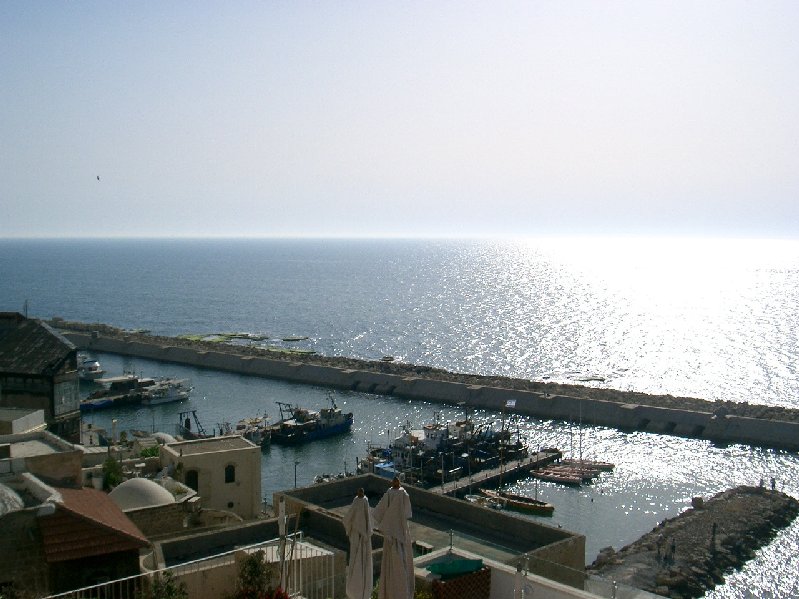

We found we didn’t have a hotel booking but this was quickly sorted,
and in the evening we went for a walk along the beach, finishing off
our holiday in Israel.
We are so glad we were able to visit this wonderful country. What
a privilege to see so many familiar Biblical sites and to have Bible
stories come alive with much more meaning as we saw them in their
original context.
How wonderful to visit “His Land” and we now ‘pray for the peace of Jerusalem’, that God’s blessing would be on His people there, and that they may know their Messiah, the Lord Jesus Christ.
“Next year in Jerusalem”.
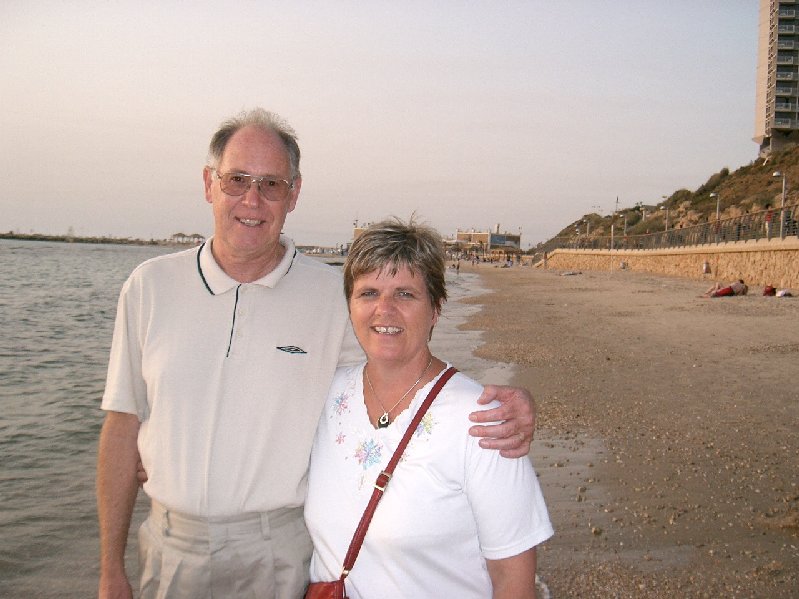
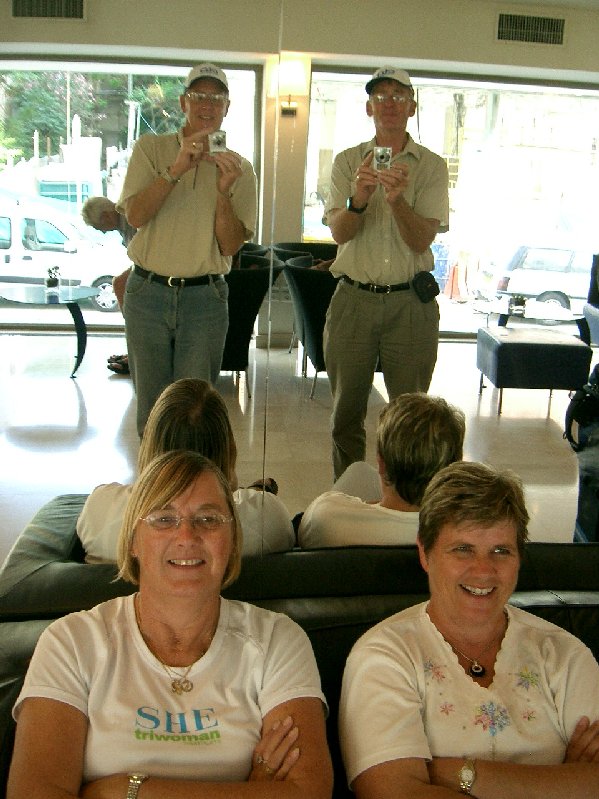
In Tel Aviv
We bought a silver Noah’s Ark as a memento of our time in Israel. It is beautiful!
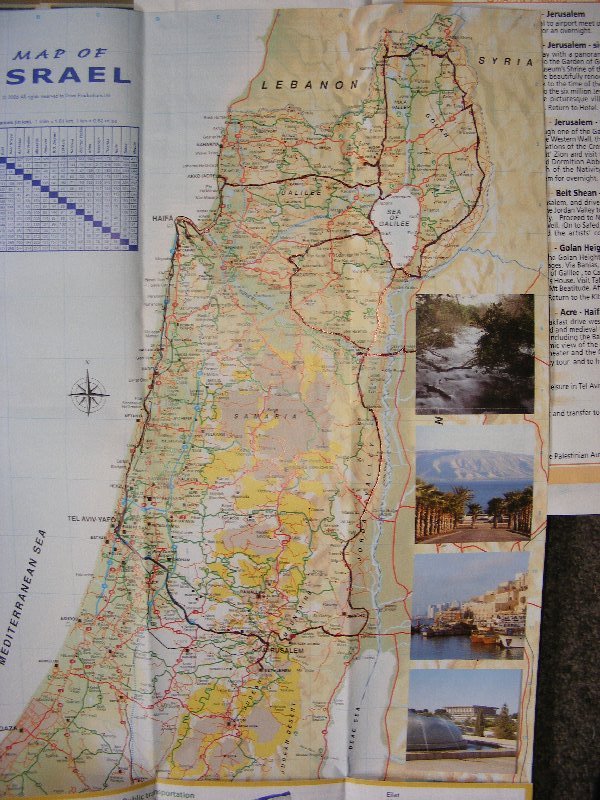
This shows where we went on our trip around Israel.
Home Recent travels Jordan and Egypt








